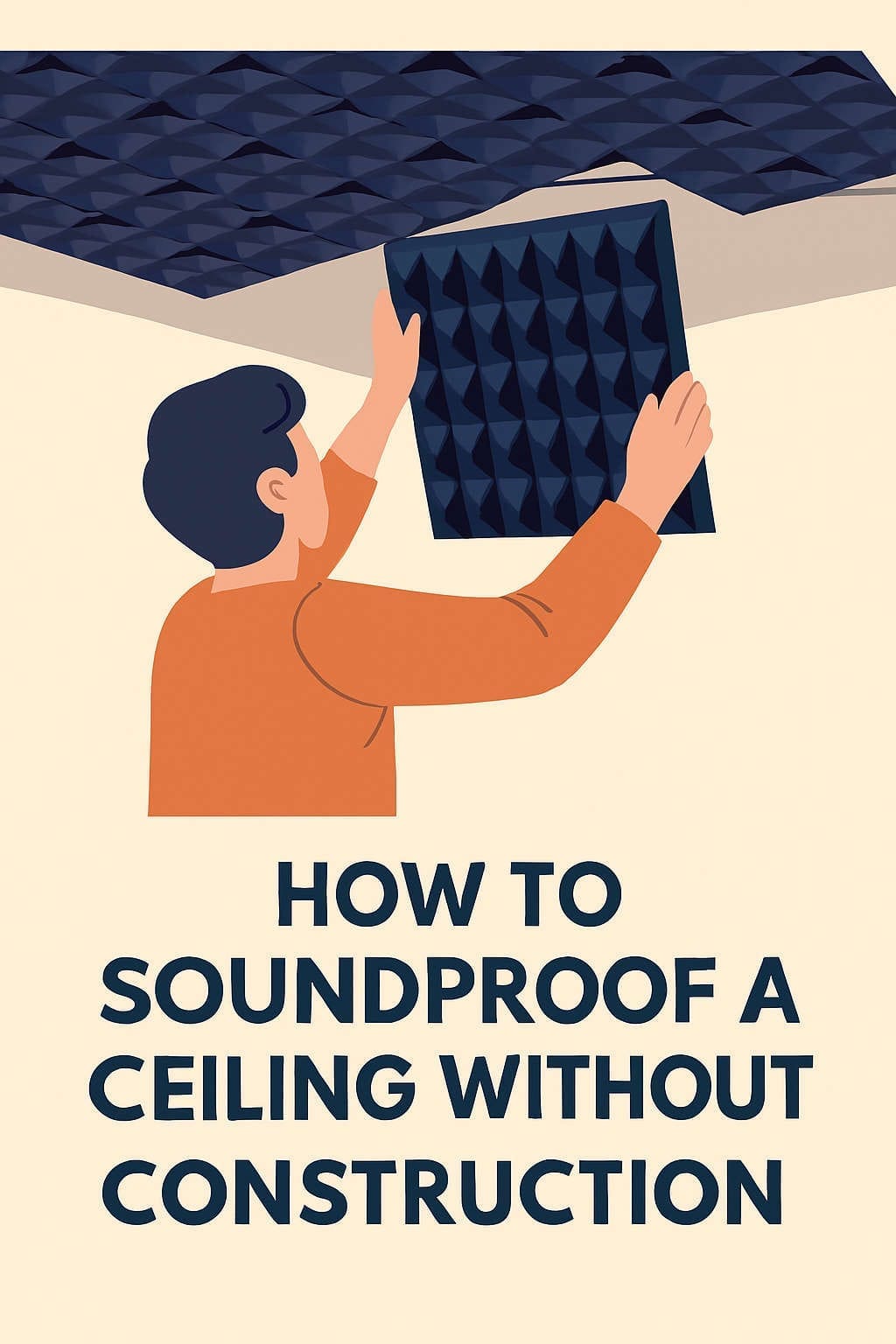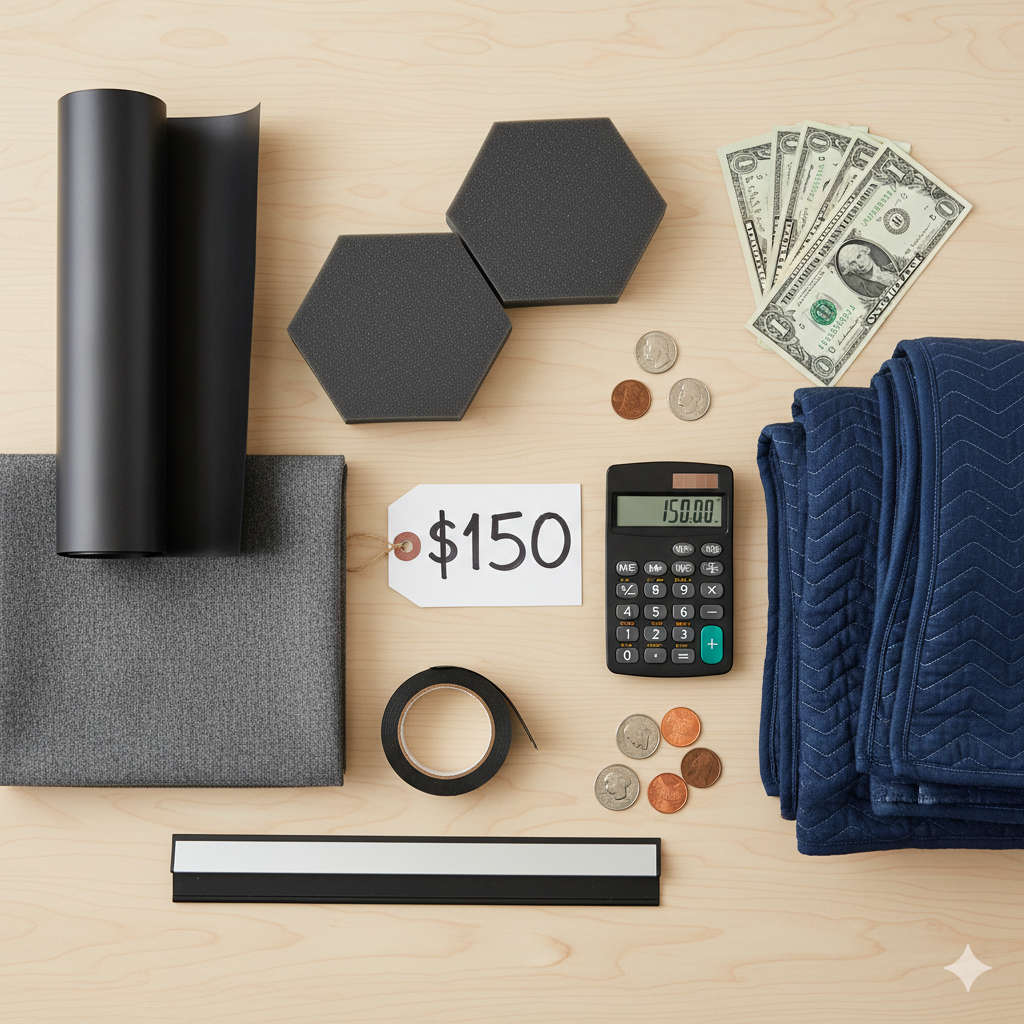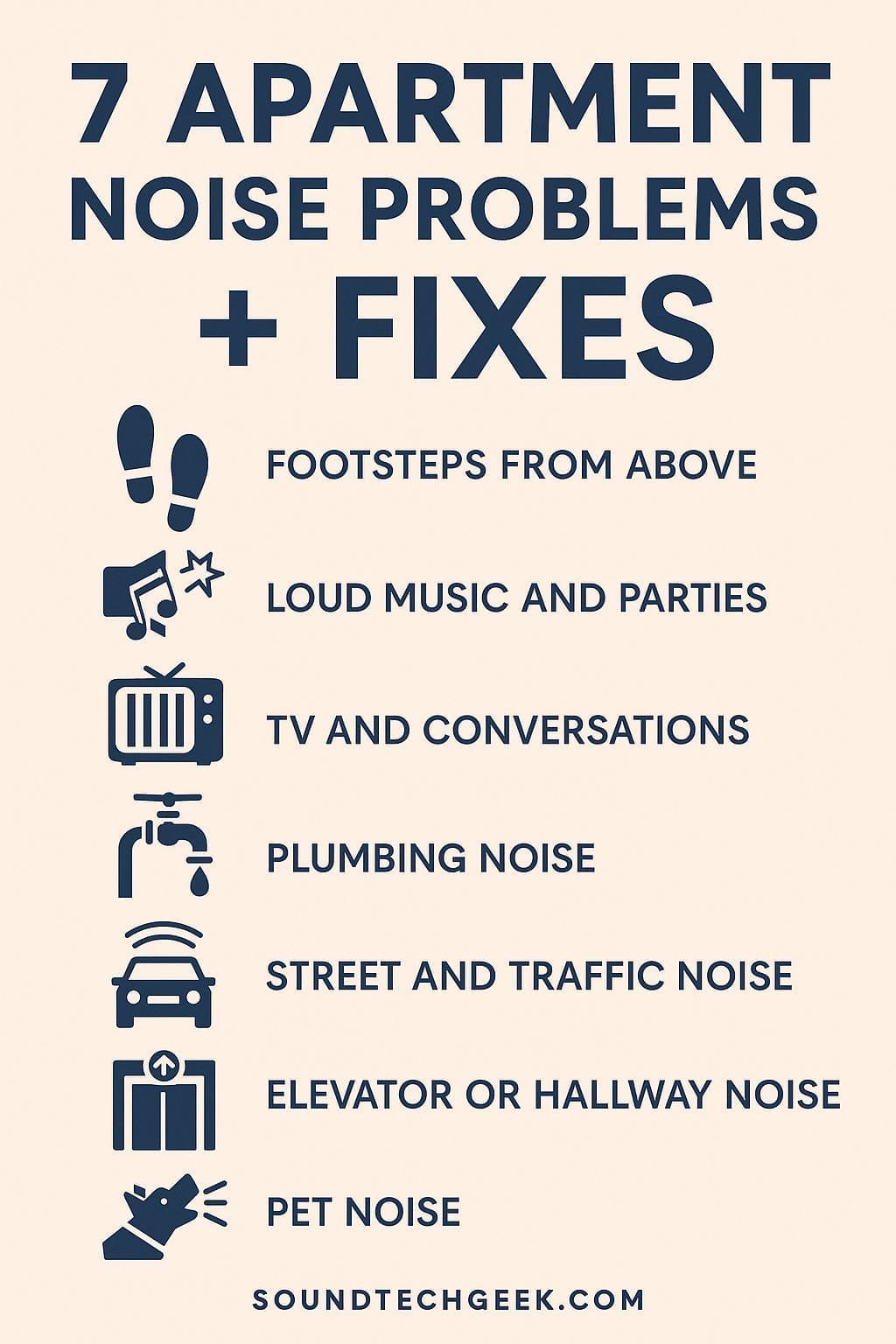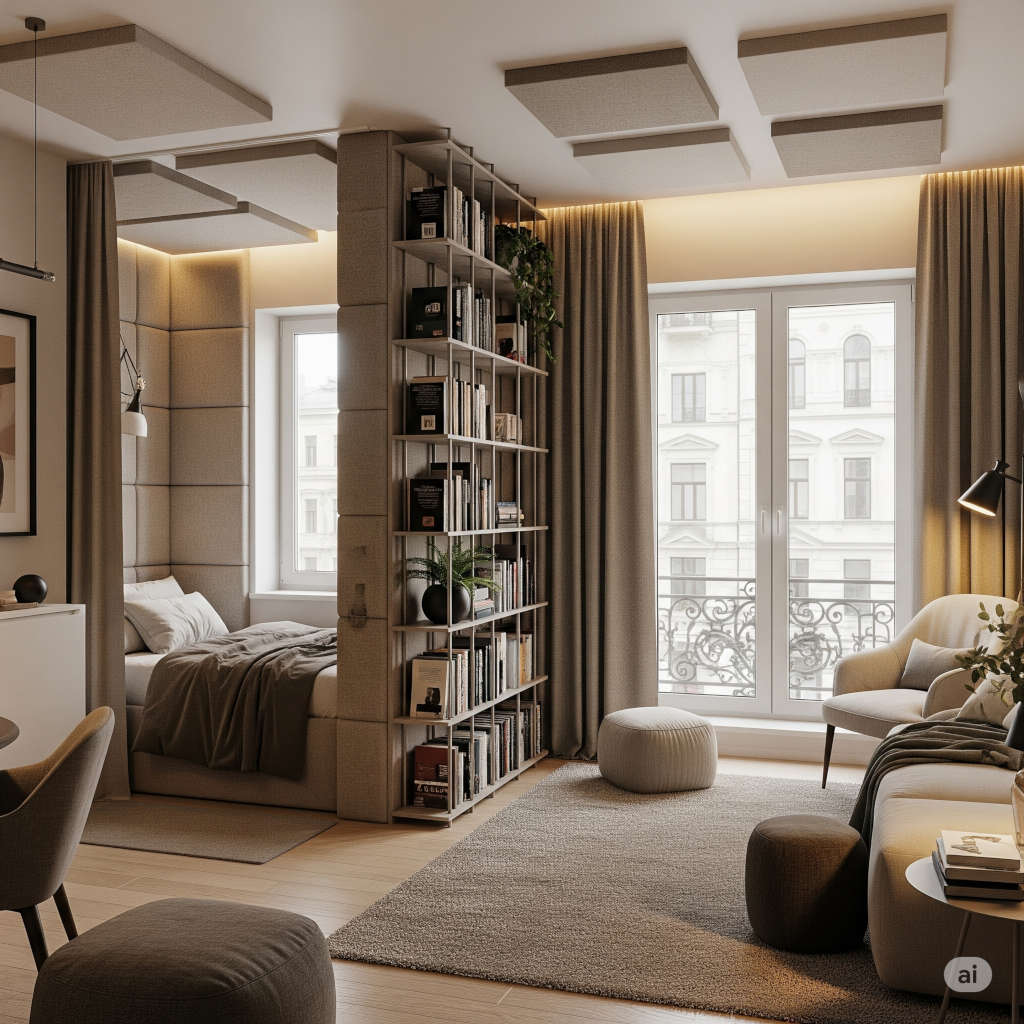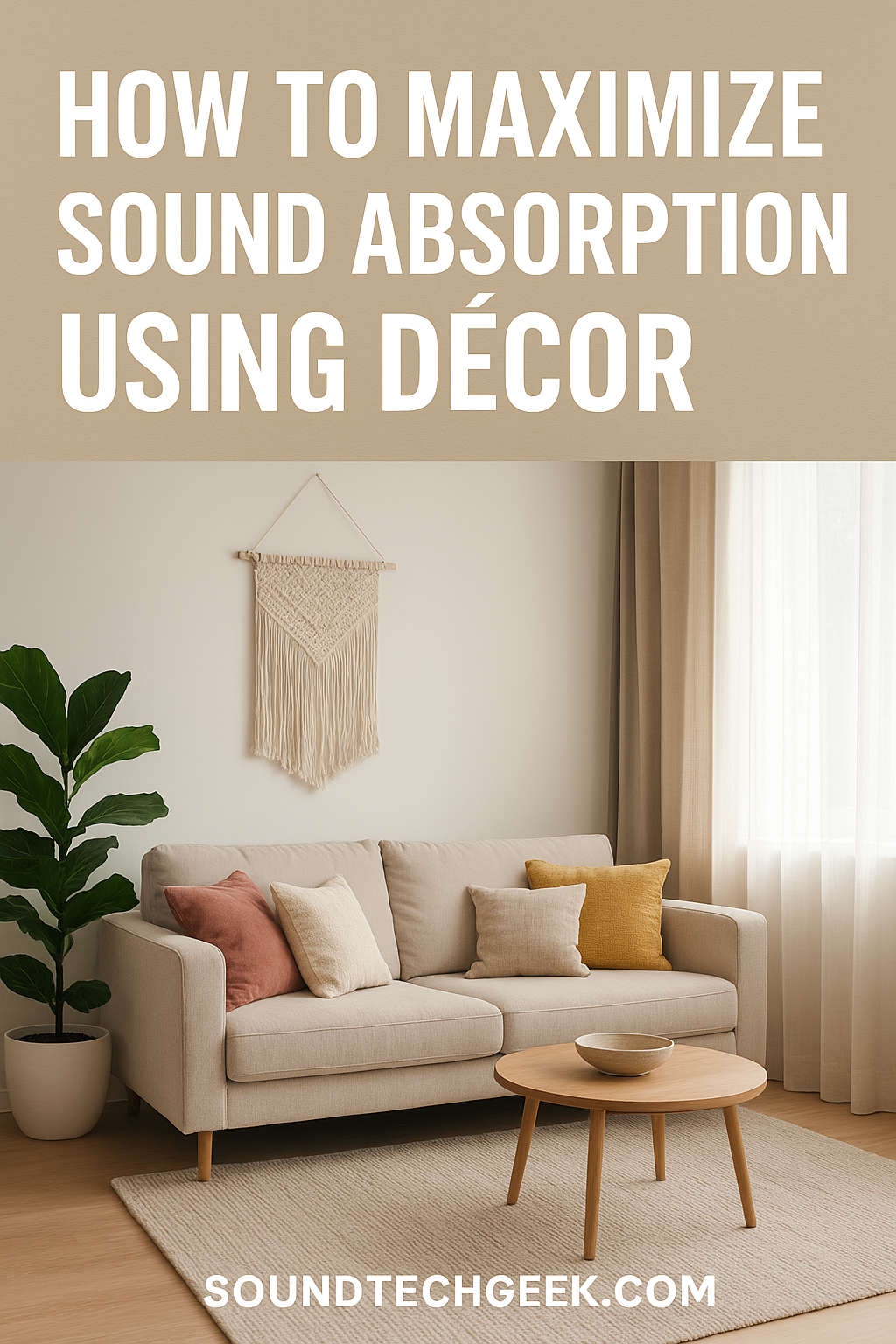Living with constant overhead noise is more than just an annoyance — it can affect sleep quality, work productivity, and even long-term health. Whether it’s the stomping of upstairs neighbors, loud TV vibrations from the apartment above, or simply echoes bouncing around your own space, many people struggle with noisy ceilings.
But here’s the good news: you don’t need to tear down walls or hire contractors to make your home quieter. With the right non-invasive strategies, you can dramatically reduce noise coming through your ceiling — no heavy construction required.
In this guide, I’ll walk you through practical, renter-friendly, and cost-effective methods to soundproof a ceiling without construction. You’ll learn why ceilings are so bad at blocking noise, the science behind soundproofing, step-by-step DIY solutions, product recommendations, and tips for combining methods to get the best results.
By the end, you’ll know exactly how to turn your noisy apartment or house into a calmer, quieter sanctuary.
Why Ceilings Let So Much Noise Through
Before jumping into solutions, it’s important to understand the why. Knowing what type of noise you’re dealing with makes it easier to pick the right tools for the job.
1. Impact Noise
This is the thudding of footsteps, moving furniture, or dropped objects from upstairs. It travels as vibrations through the floor above and into your ceiling. Impact noise is the hardest type to stop without construction.
2. Airborne Noise
Voices, TV sounds, barking dogs, or music from above fall into this category. Airborne noise passes through the air and slips through thin ceiling materials like drywall.
3. Flanking Noise
Sometimes, the noise doesn’t come directly through your ceiling. Instead, it travels through shared walls, ductwork, or small gaps around fixtures and vents.
4. Reverberation Inside Your Room
Even if the noise isn’t coming from upstairs, a bare ceiling reflects sound waves, making your own room feel louder and echoey.
👉 Pro tip: If you hear clear conversations or TV sounds, you’re dealing mostly with airborne noise. If you hear thuds or footsteps, that’s impact noise. If your room feels echoey even when it’s quiet, you need to tackle reverberation.
The Core Principles of Non-Construction Soundproofing
Without construction, you’re not rebuilding your ceiling from the inside — but you can still use the four golden rules of soundproofing:
- Add Mass → Heavier, denser materials block more airborne sound.
- Absorb Sound → Soft and porous materials soak up sound waves, reducing echoes and reverberation.
- Seal Gaps → Even tiny cracks can leak a surprising amount of noise.
- Redirect & Mask → Sometimes you can’t fully block noise, but you can mask or redirect it.
Every method I share in this guide connects back to one or more of these principles.
1. Install Acoustic Ceiling Panels
Best for: Reducing airborne noise and echoes in apartments, home theaters, and offices.
Acoustic panels are one of the most effective renter-friendly solutions. They come in many forms, from simple foam tiles to designer fabric-wrapped boards that double as wall or ceiling décor.
How They Work:
- They absorb mid- and high-frequency sounds like voices and TV noise.
- When strategically placed, they prevent noise from bouncing around the room.
Types of Panels:
- Foam Panels – Affordable and lightweight. Good for echoes, but not as strong for blocking noise from above.
- Fabric-Wrapped Panels – More effective, stylish, and available in decorative designs.
- Drop Ceiling Tiles – If you already have a suspended ceiling, replace thin tiles with acoustic-grade versions.
Product Recommendation:
- ATS Acoustics Panels – High-density, fabric-wrapped panels available in custom colors.
- Auralex Studiofoam Tiles – Popular in home studios and offices.
👉 Installation Tip: Use adhesive strips, Velcro, or ceiling hooks so they’re removable and won’t damage your ceiling.
Pros: Effective, attractive, renter-friendly.
Cons: Won’t fully stop heavy impact noise (like stomping).
2. Use Mass Loaded Vinyl (MLV) Sheets or Curtains
Best for: Blocking voices, loud conversations, and TV noise from upstairs.
Mass Loaded Vinyl (MLV) is a dense, flexible soundproofing material used in professional installations. While it’s often stapled behind walls, you can also use it in non-destructive ways for your ceiling.
How to Apply Without Construction:
- Attach MLV sheets to the ceiling using strong adhesive hooks or nails.
- For a renter-friendly option, hang MLV like ceiling curtains on a track, leaving a small air gap between the vinyl and the ceiling.
Product Recommendation:
- Audimute Soundproofing Material – Eco-friendly MLV alternative.
- Trademark Soundproofing MLV – Popular choice for home DIY projects.
👉 Pro tip: Cover MLV with fabric, wood panels, or acoustic boards for a cleaner look.
Pros: Excellent for blocking airborne noise.
Cons: Heavy (you’ll need strong anchors), less aesthetic unless covered.
3. Hang Acoustic Ceiling Clouds or Baffles
Best for: Large rooms, studios, loft apartments, and offices with high ceilings.
Acoustic “clouds” are panels that hang horizontally a few inches below the ceiling. Acoustic “baffles” hang vertically. Both absorb noise from multiple directions and reduce echo dramatically.
Why They’re Great:
- They absorb sound waves before they bounce back into the room.
- The air gap between the panel and ceiling enhances sound absorption.
DIY Option:
Build your own ceiling clouds using:
- A lightweight wooden frame.
- Rockwool or Owens Corning 703 insulation.
- Fabric wrapping (choose breathable fabric for best performance).
Product Recommendation:
- Acoustimac DMD Ceiling Clouds – Professional-grade, customizable.
- ATS Acoustics Baffles – Ready-to-hang vertical panels.
Pros: Stylish, effective at reducing echo and airborne noise.
Cons: Requires ceiling hooks and some headroom.
4. Add Fabric Layers: Rugs, Quilts, and Drapes
Best for: Budget-conscious renters and quick DIY fixes.
While not as powerful as MLV or professional panels, heavy fabrics can make a surprising difference when layered correctly.
Ideas:
- Hang decorative quilts or blankets across the ceiling.
- Install curtain rods and hang thick drapes just below the ceiling.
- Place thick rugs or carpets on the floor above (if you can convince your upstairs neighbor or if it’s your own home).
👉 Pro tip: Look for materials like wool or dense cotton rather than thin polyester.
Pros: Cheap, renter-safe, easy DIY.
Cons: Limited effectiveness for strong noise.
5. Apply Acoustic Foam Panels
Best for: Home offices, recording studios, podcast rooms.
Acoustic foam (think “egg crate” style) doesn’t block noise from upstairs neighbors but it does absorb reflections in your room, making it sound calmer and clearer.
Where to Use:
- Above desks or beds where sound feels most intense.
- Around ceiling corners where sound waves tend to collect.
Product Recommendation:
- Auralex Studiofoam – Industry standard.
- Foamily Acoustic Panels – Budget-friendly option on Amazon.
Pros: Lightweight, affordable, easy to stick on.
Cons: Doesn’t block outside noise, mainly controls echo.
6. Try Acoustic Paint
Best for: Subtle sound reduction without changing your ceiling’s appearance.
Acoustic paint looks just like regular paint but contains sound-dampening fillers that add density. While it won’t silence loud footsteps, it can cut mid- to high-frequency noises by a few decibels.
Application:
- Apply 2–3 coats for noticeable improvement.
- Works best when combined with panels or fabrics.
Product Recommendation:
- Acousti-Coat Soundproof Paint – One of the most popular acoustic paints.
Pros: Invisible, easy DIY, affordable.
Cons: Only reduces noise slightly, won’t help with heavy impact sounds.
7. Use White Noise or Sound Masking
Best for: Bedrooms and offices when total silence isn’t possible.
Sometimes blocking noise isn’t realistic. In those cases, sound masking (adding consistent background noise) can make upstairs noise less noticeable.
Options:
- White noise machines.
- Smart speakers with sound apps (rain, ocean waves, static).
- Air purifiers or fans that double as sound maskers.
Product Recommendation:
- LectroFan White Noise Machine – Highly rated for bedrooms.
- Marpac Dohm – A classic fan-based noise machine.
Pros: Instant relief, improves sleep and focus.
Cons: Doesn’t stop noise, only masks it.
8. Rearrange Furniture for Sound Blocking
Best for: Complementary improvement when combined with other methods.
Strategic furniture placement can help muffle ceiling noise:
- Place tall bookshelves against walls closest to the noise source.
- Fill shelves with dense items (books, vinyl records, storage bins).
- Consider fabric-covered storage cubes for extra absorption.
👉 Pro tip: Position your bed or desk away from the noisiest ceiling areas if possible.
Pros: Functional, aesthetic, adds absorption.
Cons: Small improvement alone.
9. Seal Gaps and Fixtures
Best for: Stopping flanking noise.
Noise often sneaks through gaps in your ceiling, like:
- Around recessed lights.
- HVAC vents.
- Small cracks near crown molding or ceiling edges.
Fixes:
- Acoustic caulk for cracks.
- Foam gaskets for light fixtures.
- Weatherstripping for attic hatches or ceiling doors.
Product Recommendation:
- Green Glue Noiseproofing Sealant – Industry standard acoustic caulk.
Pros: Inexpensive, simple, boosts effectiveness of other methods.
Cons: On its own, only reduces minor leaks.
10. Combine Multiple Methods for Maximum Effect
The truth is, no single method will fully soundproof your ceiling without construction. But when you layer solutions, you can make a dramatic difference.
Example Combo (Apartment Living Room):
- Paint the ceiling with acoustic paint.
- Add fabric-wrapped acoustic panels in key spots.
- Hang a few ceiling clouds for style and absorption.
- Place a white noise machine for nighttime masking.
Example Combo (Bedroom):
- Install removable MLV curtains on a ceiling track.
- Hang a thick quilt across the ceiling.
- Place a rug upstairs (if possible).
- Use sound masking at night.
👉 The key is mixing blocking + absorption + masking.
Common Mistakes to Avoid
- Using foam panels only – They reduce echoes but won’t block neighbor noise.
- Expecting total silence – Without structural work, your goal should be noise reduction, not elimination.
- Forgetting flanking paths – Sometimes sound is coming through walls or vents, not the ceiling itself.
- Using thin fabrics – Lightweight sheets or tapestries won’t block sound.
Cost Breakdown: Low to High
- Budget ($20–$100): Blankets, rugs, DIY drapes, foam panels, acoustic caulk.
- Mid-Range ($100–$500): Fabric-wrapped panels, ceiling clouds, acoustic paint, white noise machines.
- High-End ($500+): Mass Loaded Vinyl sheets, professional baffles, custom ceiling treatments.
Final Thoughts
Soundproofing a ceiling without construction is all about being strategic. You might not achieve perfect silence, but you can create a calmer, quieter space by layering affordable, non-invasive solutions.
If you’re struggling with constant noise, start small: try fabric layers and a white noise machine. If you need more, upgrade to MLV sheets or professional acoustic panels. Over time, you’ll find the right mix that transforms your space into a peaceful retreat.
Remember: silence may be golden, but peace and quiet are achievable.
You might also like,
